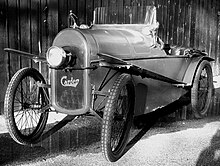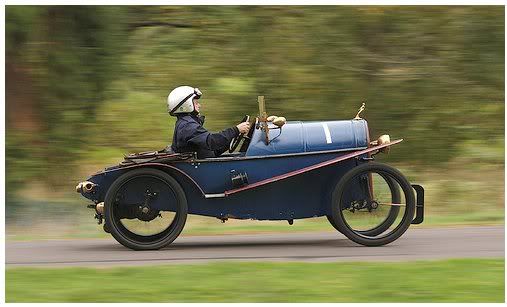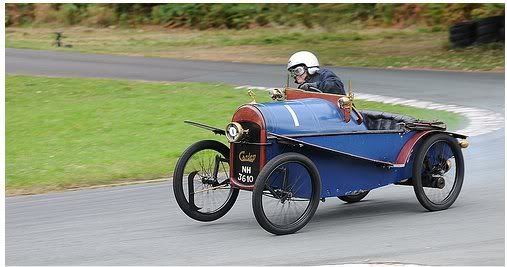Carden (cyclecar)
The Carden Engineering Company Ltd.. was a British manufacturer of cyclecars under the name Carden and developed the Voiturette Sheret.
Company History
Captain (later Sir) John Valentine Carden was an officer, inventor and engineer. Among his designs were among ultralight aircraft, amphibious tanks and a Cyclecar, which was sold as Carden and starting in 1922 as New Carden.
For its production in 1913, he founded the Carden Engineering Company Ltd.. in Teddington. In 1920 the company moved to Ascot. In 1922, he sold the company to the Arnott & Harrison Limited in Willesden NW10. The new owners, they organized as a New Carden Light Car Company, based at the Hythe Street # 10 in Willesden, probably the address of the purchaser, which actually produced the vehicles. The company's name is misleading, because with Light cars are actually Voiturettes, Carden and New Carden, however, are classified as Cyclecar in English usage meant. 1924-1925 was another, more upscale version, which was sold under the brand Sheret. This vehicle was abgeboten with three seats as Light car ( Voiturette British- definition). 1925 ended the vehicle production.
Sir John Carden came in a 1935 plane crash.
Carden
The Carden had a lightweight ladder frame chassis. The air-cooled two-stroke engine was housed in the rear of the petrol tank was sitting under the wrong hood. The Cyclecar had initially forward a semi-elliptical transverse leaf spring and the rear two Viertelelliptik or coil springs. It seems that the Carden was offered from 1913 to about 1919 only as singles ( " monocarboxylic "). Already at its inception three different engines, however, were available. These were the 1913-1914 model 4 HP, which in turn was available with either a single-cylinder engine with 482 cc displacement, or with a two-cylinder boxer engine with 499 cc. The weight of the single cylinder model was given by 140 kg. The model with 5 HP two-cylinder engine, there were 1914 with 647 cc displacement and 1915-1916 with 662 cc displacement. 1915, the two-cylinder model 6 HP additionally appeared with 741 cc displacement.
The power transmission is made via a two-speed gearbox front wall and a chain to the rear axle. The fuel tank was sitting in front. The filler neck was attached to the radiator dummy, where for water-cooled vehicles cooling water has been added. As the filler cap and a screw-on " cooler " character could be used.
1919 published a revised model for the 1920 version. By no later than 1920 there were also front coil springs that were similar to those of the Lancia Lambda attached. The last model was the 7 HP, the it with a two-cylinder engine with 707 cm ³ capacity was from 1920; the Sheret got the same engine.
In the course of its production time six different motors in Carden were offered and there was one-, two - and four-seater bodies.
The first model of Tamplin engine based on a model of Carden.
Models
Export
Jouve et Cie of Paris sales in 1914 in France by Carden vehicles under the brand name Le sylph.










